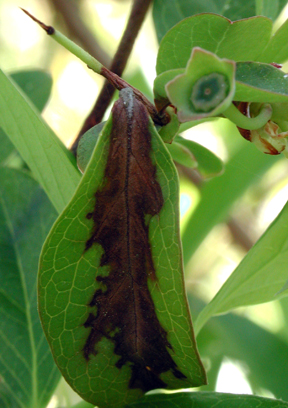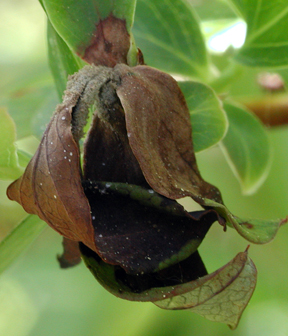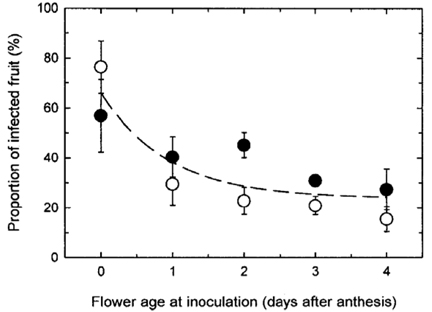If blueberries are still in bloom, keep up mummy berry sprays
Editor’s note: This article is from the archives of the MSU Crop Advisory Team Alerts. Check the label of any pesticide referenced to ensure your use is included.
Due to excessive precipitation this spring and difficulty getting equipment into wet fields, growers were not able to put on critical fungicide sprays for control of mummy berry. As a consequence, mummy berry pressure is higher than average in many locations. The number of shoot strikes per bush counted has been over 100 in some cases. In addition to killing shoots that would have been bearing fruit next year, shoot strikes are sources of infectious spores for fruit infection. Good pollinating weather increases the risk of fruit infection, as bees and flies serve as carriers of infectious spores when they move from infected shoots to susceptible flowers. There is also some new information regarding the possible role of mosquitoes in spreading mummy berry spores; the rainy spring certainly has enhanced the number of mosquitos. The spores germinate on the stigma of the flower and then the fungus grows alongside the pollen tubes through the pistil into the ovaries. Individual flowers are most susceptible right after they open and susceptibility decreases over the next four days (Figure 1). Any flowers that have recently opened are susceptible, even though the crop is at petal fall. So don’t stop applying fungicide sprays. Once the fungus reaches the ovaries, it colonizes the developing berry internally. This infection is not visible externally while the fruit is still green but can be seen as white fungal growth if the berries are cut open.
If blueberry bushes are still in bloom, there still is a chance of infection, especially if shoot strike pressure is high in that field or nearby fields. Fungicide sprays to prevent fruit infection are recommended. A systemic fungicide such as Indar will be most effective, since we are trying to specifically protect the flower stigmas from infection. Do keep in mind the pre-harvest interval, which is 30 days for Indar. Indar is also effective against Phomopsis twig blight and canker. Phomopsis twig blight is showing up in many locations too. However, protection against anthracnose fruit rot is also important at this time, so add a protectant fungicide like Ziram or Captan to the Indar spray. Pristine is also good against the fruit infection stage of mummy berry (though probably not quite as strong as Indar) and has excellent efficacy against anthracnose and Phomopsis as well.



 Print
Print Email
Email






